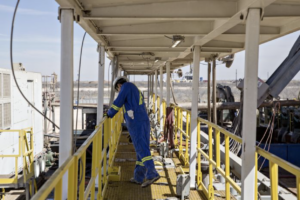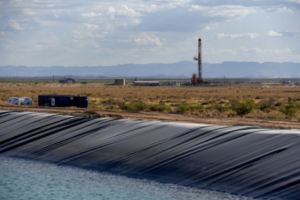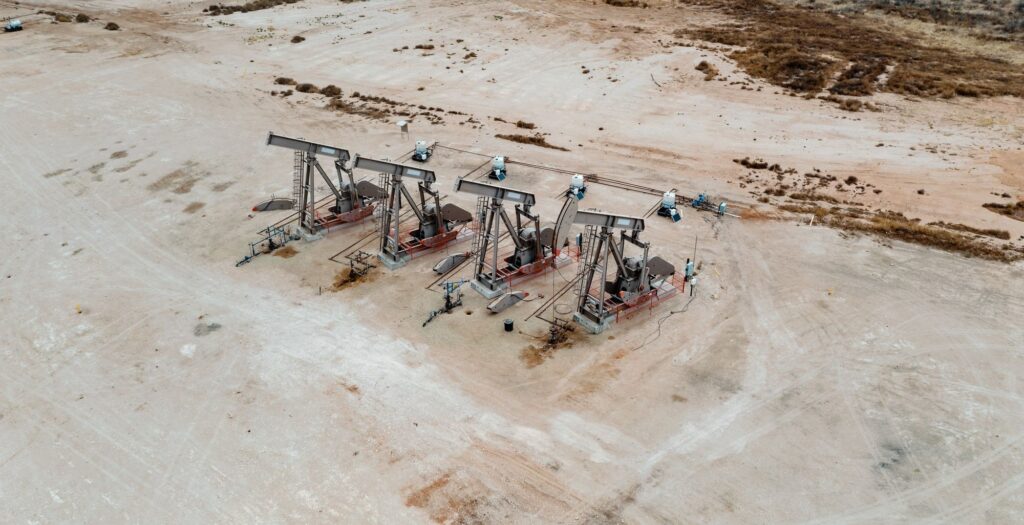A 5.4M earthquake was recorded in Reeves County on November 16, 23 miles southeast of Mentone, TX, within the North Culberson-Reeves 4.5km Seismicity Response Area (SRA) boundary. According to the United States Geological Survey (USGS) this is the strongest earthquake to occur in Texas since 1995, and is about six miles from the 4.9M event that occurred on March 26, 2020.
SRAs in Texas (and similar areas in New Mexico established by the state’s Oil Conservation Division) are areas where protocols such as volume reductions and daily reporting requirements have been put in place in response to significant seismic events. In these areas, if more large earthquakes happen in the future, additional restrictions may come into effect – reducing injection volume from recent (perhaps already-reduced) levels, and in some cases, complete shut-ins. In some areas, no new injection permits are being approved for the time being. You can download a free summary of the recent seismicity regulations in the Permian Basin with the latest data from Texas RRC and the New Mexico OCD from our website.
In the North Culberson Reeves SRA, pursuant to the Operator-Led Response Plan, a 4.5M+ event after December will result in shut-in of deep injection wells and 50% utilization reduction of shallow injection wells within 4.5 km for 18 months. There are no active deep wells affected at this time, but the shallow wells in the area have been injecting water at a rate of about 45,000 bpd, meaning the area would lose about 22,500 bpd of actual injection capacity. Two more earthquakes greater than M4.5 occurred on November 24, and will likely impact nearby injection volumes.
A recent article in the Wall Street Journal featured data supplied by B3 Insight to document the recent increase in the number of seismic events magnitude 2.0 or higher in the Delaware Basin. The article notes that 28 disposal wells sit within 20 miles of this recent large earthquake.
You can read the full WSJ article below:
https://www.wsj.com/articles/earthquake-in-top-texas-oil-region-spurs-calls-for-new-fracking-rule
Note: This article appeared in the Wall Street Journal on November 19, 2022
Earthquake in Top Texas Oil Region Spurs Calls for New Fracking Rules
Powerful temblor is latest to hit Permian basin, where scientists link wastewater injection to more seismic activity
By Benoît Morenne
and Collin Eaton
Nov. 19, 2022 10:15 am ET
A powerful earthquake in West Texas is drawing fresh scrutiny to frackers’ water-management operations in the nation’s hottest petroleum-producing region.
A 5.4-magnitude earthquake, the fourth largest in Texas history, struck an oil-and-gas production hot spot in Reeves County on Wednesday afternoon, sending tremors that were felt as far as Dallas, El Paso and San Antonio, where it damaged a historical building. No injuries were reported.
The temblor adds pressure to the state’s oil-and-gas regulators to impose stricter rules on frackers pumping wastewater underground to stymie the Permian basin’s dangerous new seismic activity, analysts and executives said. It could also prompt a review of management practices and affect oil operations, they said.
The quake was one of thousands to shake the oil-rich Permian basin of West Texas and New Mexico in recent years. Scientists have linked the increase in seismic activity to shale companies pumping billions of gallons of wastewater—a byproduct of oil-and-gas production—down shallow and deep disposal wells. Injections modify the pressure underground and can cause faults to slip and create earthquakes.
The temblor was unlikely to have an immediate impact on oil-and-gas production in the area, according to analysts. But some executives said it should be a wake-up call for regulators and companies to figure out how to deal with the vast volumes of water that surface daily in the oil patch.
Kirk Edwards, an oil executive and former chairman of the Permian Basin Petroleum Association, said he felt this week’s earthquake at his office in Midland, Texas, about a three-hour drive away from the site of the temblor. “We cannot keep cramming a tremendous amount of water through a disposal well at one site,” Mr. Edwards said.

Chevron, which operates facilities in the Permian Basin, has agreed to curb injection of water into deep geological formations.
PHOTO: DANIEL ACKER/BLOOMBERG NEWS
A spokesman for the Railroad Commission of Texas, which regulates the oil-and-gas industry in the state, said on Thursday that the agency was examining how much water operators disposed of in the affected area, and that it would take any necessary actions.
There have been 14 earthquakes larger than magnitude 4 in the Delaware basin, a section of the Permian, so far this year, compared with 11 in 2021 and three in 2020, according to water-analytics company B3 Insight, which analyzed state and national seismic activity data. As of mid-November, the number of earthquakes larger than magnitude 2 had more than doubled between 2020 and 2022 to reach 1,756, B3 data shows.
The temblors have generally caused little damage because they largely occur in uninhabited land. The impact of the recent quake, however, reverberated in Carlsbad, N.M. In San Antonio, University Health hospital evacuated a 105-year-old historic building after employees inside felt some swaying on Wednesday, a University Health spokeswoman said.
In 2021, the Railroad Commission created the Northern Culberson-Reeves Seismic Response Area to address seismicity in the region, which led to operators agreeing to restrictions on wastewater disposal as part of a response plan published in March. If an earthquake of at least 4.5 magnitude strikes that region next year—when some of the rules go into effect—it will trigger a regulatory response prompting companies to curtail usage of shallow water wells by 50% within about 4.5 kilometers, or 2.8 miles, of the seismic event for 18 months.
But with only a small number of active disposal wells within 4.5 kilometers of the earthquake, that response would do little to help, said Rob Bruant, a hydrologist and product director at B3 Insight. “These seem like half-measures at this point,” Dr. Bruant said.
The number of earthquakes of 2.0-magnitude or higherSource: B3 Insight
Amanda Brock, the chief executive of Aris Water Solutions Inc., said that the industry has been working on the issue of seismicity with regulators and was on a path to improving its water-management practices. “I don’t think this is a tipping point,” she said of this week’s earthquake.
There are currently 48 active shallow water disposal wells and 26 deep wells across the entire 25-kilometer radial area, according to the Railroad Commission. Two deep disposal wells were previously shut after a 4.5-magnitude earthquake struck the area in March.
So far, Texas regulators have come down hardest on deep disposal wells typically at a depth of between 11,000-16,000 feet. Last year, in a separate designated area near Midland and Odessa, the commission curtailed the amount of water companies were permitted to inject into those wells. Seismic activity in that area has fallen significantly this year, state data show.
Stringent rules on water disposal in other U.S. regions have had a measurable impact on seismic activity. Regulators in Oklahoma began implementing rule changes following several 5.0-magnitude earthquakes in 2016, which helped ease the number and strength of temblors in the state, data showed.

A quake that Reeves County, Texas, experienced earlier this week should be a wake-up call for state regulators and oil-and-gas companies, some executives say.
PHOTO: CALLAGHAN O’HARE/BLOOMBERG NEWS
As many as 28 shallow disposal wells sit within 10 miles of this week’s earthquake, and oil companies in the past 18 months have pumped increasing amounts of water at higher pressure levels into a majority of them, putting the area at higher risk for seismic activity, according to B3 Insight.
The Railroad Commission said in March that although it believed deep injection wells to be a driver of seismic activity in the area, it didn’t rule out shallow disposal wells as being linked to earthquakes. Injecting water into many wells—deep or shallow—has a cumulative effect over time on pressures on deep geological layers and can ultimately create earthquakes, said Heather DeShon, a professor in the earth-sciences department at Southern Methodist University.
As of the end of last year, large producers such as Chevron Corp. and Cimarex Energy Co.—now part of Coterra Energy Inc.—were depositing water in deep formations in the area, according to Railroad Commission data.
Chevron has previously voluntarily agreed to curtail injection of water into deep geological formations to 150,000 barrels a day in the agency-delineated seismic area by June 2023, a company spokeswoman said, and plans to reach that goal next month.
Coterra didn’t respond to a request for comment.
How to handle millions of gallons of wastewater has long been one of the industry’s trickiest problems. In recent years, water-infrastructure companies such as Aris Water Solutions Inc., Goodnight Midstream LLC and WaterBridge Resources LLC have built pipelines to transport the briny liquid far afield and dispose of it deep underground, or moved to recycle it and sell it back to frackers.
Write to Benoît Morenne at [email protected] and Collin Eaton at [email protected]

